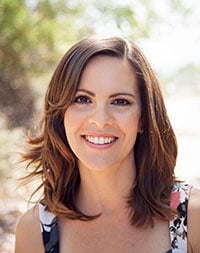
Amber Elder, a Balfour yearbook representative, offers advice to improve the quality of photography captured on cell phones. Her tips aim to help yearbook teams empower anyone with a mobile device to opportunistically capture potential coverage for this historic year.
With so many schools working at a distance for the 2021 school year, everyone involved in the production of a yearbook is trying to plan around COVID-related challenges.
As a rep, the question I’m asked most often is… “How are we going to get any photos this year?”
While there are many ways to record the history and events of a year without depending solely on photography, this concern is very valid. I consistently encourage staffers to recruit as much outside help as possible even in “normal times.” If you don’t seek help outside the yearbook room yet, 2021 might be the year you try. Think about it…anyone with a mobile device can be a potential photographer. Sometimes it is just a matter of asking. Everyone from the friendly front office staff to the coaches can be a resource of differing perspectives, putting more eyes and ears on your side when coverage requires more work than usual.
Once you’ve assembled your “honorary” photographers, you could give them a little guidance to increase the likelihood of receiving photos you want to include in your yearbook. To get you started, I’ve come up with some easy tips that will “up” anyone’s cell phone photography game.
- Clean your lens. This one may seem like a no-brainer, but with how many times a day we are pulling our phones out of our pockets, backpacks and purses, those lenses get smudged! To protect your device, I suggest using a microfiber cloth, like what you would use for your glasses. This will help keep your lens clean and scratch free.
- Turn on the grid. Most smart phone cameras come equipped with a grid you can enable to assist composition. This is an easy way to demonstrate the rule of thirds.
- Check for unwanted subjects. Ever had something in the background ruin the perfect shot? Taking an extra second to double-check before you click may save you some grief.
- Avoid zooming. Unlike an optical zoom, digital zoom is a just a cropped and resized image. Meaning, poorer quality.
- Avoid the flash. Natural light sources are going to yield better shots.
- Consider a tripod. Holding a camera steady can be a challenge. No tripod? You could also lean your phone against something to ensure a crisp shot.
- Burst mode. Did you know that when you long press or hold down your cell phone’s shutter button, it takes a big burst of photos? Sometimes when the action is live or you are hoping for a specific shot this little trick comes in handy. Once you’ve completed your burst, you can review each frame and keep only the ones you like.
- ImageShare. What’s the easiest way to get your guest photogs to get you their shots? We have an app for that! It’s free and connected to your Balfour software. Get with your rep or AE to find out more if you aren’t already using this valuable tool.
- PRACTICE. Just like any other skill, practicing will help improve your work.
I think it’s easy for yearbook advisers and teams to feel like they are on an island all by themselves. No one truly understands those late night work sessions and what it takes to produce a yearbook other than you. But I think you all may be surprised at the generosity of spirit and hidden talent not being utilized on your campus. Let’s work together and create a community culture for yearbook. This year’s students are depending on us.

Amber Elder is one of the Balfour Representatives working with schools across Southern California. Prior to working for Balfour, she was the yearbook adviser for her daughter’s elementary school and a Balfour customer.

